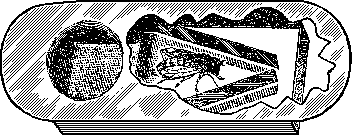
|
The view left is of the top moulding, but is viewed from the
underside.
The bracketed dimensions give the original imperial design
parameters.
The bottom moulding is viewed from the top. The phosphor
bronze springs are held in place by thermally fusing the pegs that
position them.
It is ESSENTIAL that the spring gap is set so that the ends
are accurately 3 mm apart and the springs are central between the top
and bottom plates.
The general assembly view is shown as if looking at the top
of the device.
Reset the springs every time you use it, even when new!...
They do not come from the supplier pre-set.
Soak in methylated spirit to remove propolis or white spirit to
soften wax deposits. Plastic ones may be soaked in a solution of washing soda (sodium carbonate)
that has been activated by adding a few crystals of caustic soda (sodium hydroxide).
|
|---|


